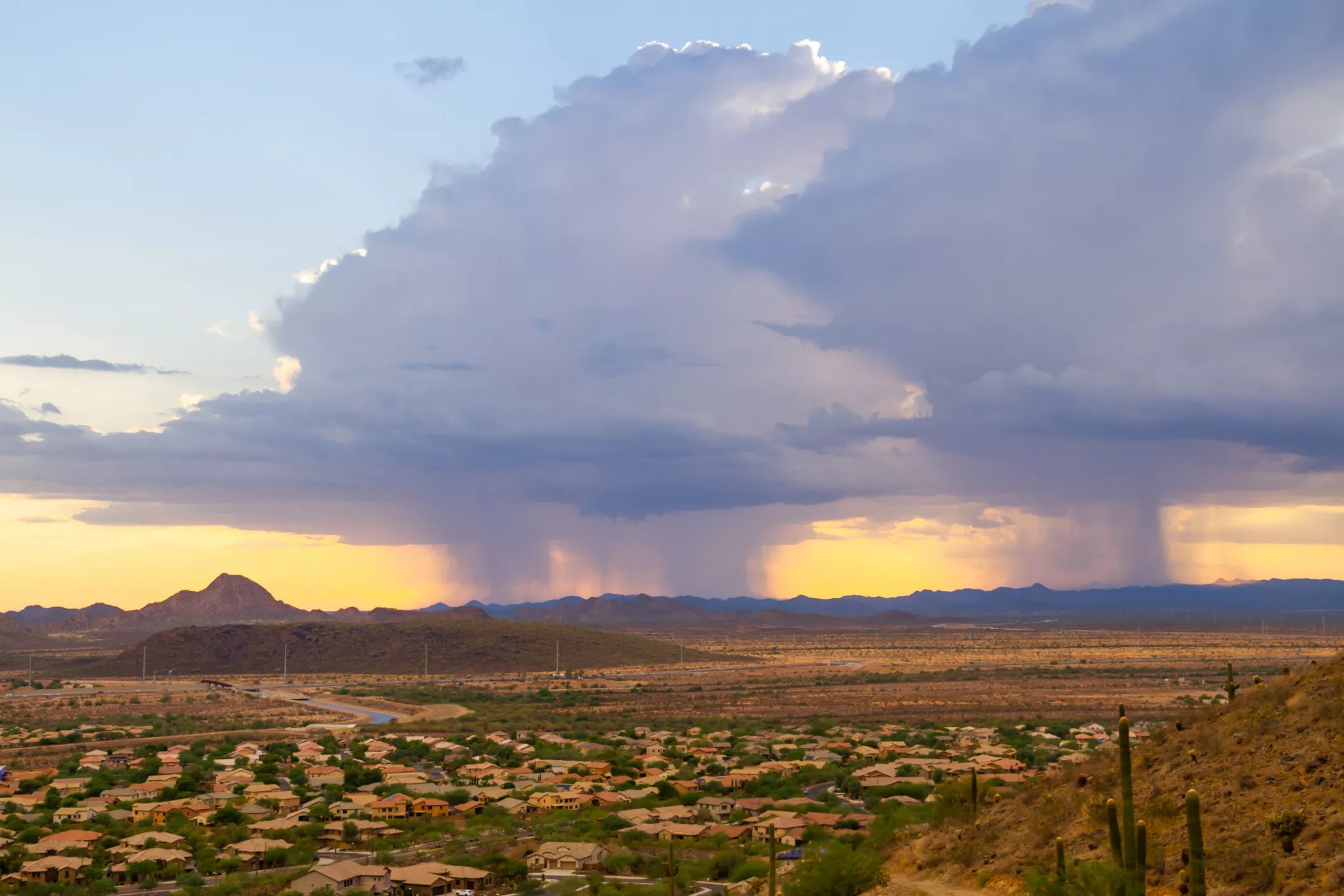
jasony00/Getty Images

Audio By Carbonatix
Well, it is a desert.
After months without measurable rain, Phoenix’s sidewalks and roads were just a bit wetter Wednesday morning, officially capping the city’s dry streak at 159 days. That falls short of the record by just one day, according to the National Weather Service.
Phoenix’s dry spell started on Aug. 22. From then until Wednesday, gauges at Phoenix Sky Harbor International Airport did not receive any measurable rainfall. But 0.01 inches of rain were measured there Wednesday morning, ending the streak.
THE STREAK IS OVER!!
0.01″ at @PHXSkyHarbor at 9 am, ending the dry streak at 159 days.
1972 maintains the record of 160 days.
Enjoy the rain ☔ï¸
— Jorge Torres (@JorgeTWeather) January 29, 2025
Phoenix’s longest dry streak began at the tail end of the Nixon administration, lasting from Dec. 30, 1971, to June 6, 1972. The third-longest dry streak lasted 147 days and is a lot more recent, spanning March 23 to August 16, 2023.
Long rainless stretches are “pretty common” in the Valley, according to NWS meteorologist Issac Smith. Going 43% of the year without rain is out of the ordinary, but residents shouldn’t be too concerned about it.
Phoenix Sky Harbor has now recorded 0.01", ending the dry streak at 159 days! #azwx pic.twitter.com/DdpPwdqwhe
— NWS Phoenix (@NWSPhoenix) January 29, 2025
The streak may be over, but that doesn’t mean rain is here to stay. After Wednesday morning, Phoenix isn’t expected to see any more rain for at least the next seven days. Dry conditions are expected to persist into next week, and temperatures also will rise. By early next week, Smith, said, Valley residents will see temperatures in the lower 80s.
Even if the rain goes away for another long stretch, residents shouldn’t fret. A lack of rain doesn’t impact Phoenix’s water supply, said Sarah Porter, the executive director of Arizona State University’s Kyl Center for Water Policy. Water from the greater Phoenix area is imported from the Salt and Verde river systems and the Colorado River, which receives its water from snowpacks in the upper Rockies.
“Variability is kind of a hallmark of the Western climate,” Porter said. “Long stretches without rain and then very, very wet years punctuated by springs of dry years is typical.”
That doesn’t mean the streak doesn’t have negative effects. The lack of rain likely strained a lot of the Sonoran Desert vegetation, said Sandy Bahr, the director of the Grand Canyon Chapter of the Sierra Club. Bahr has seen cactuses and other native plants die in her front yard, which gives invasive or non-native species a chance to take root.
“We have a lot of non-native plants that are in the lands around our communities,” Bahr said. “And when those are all dried out, they become more of a fire hazard.”